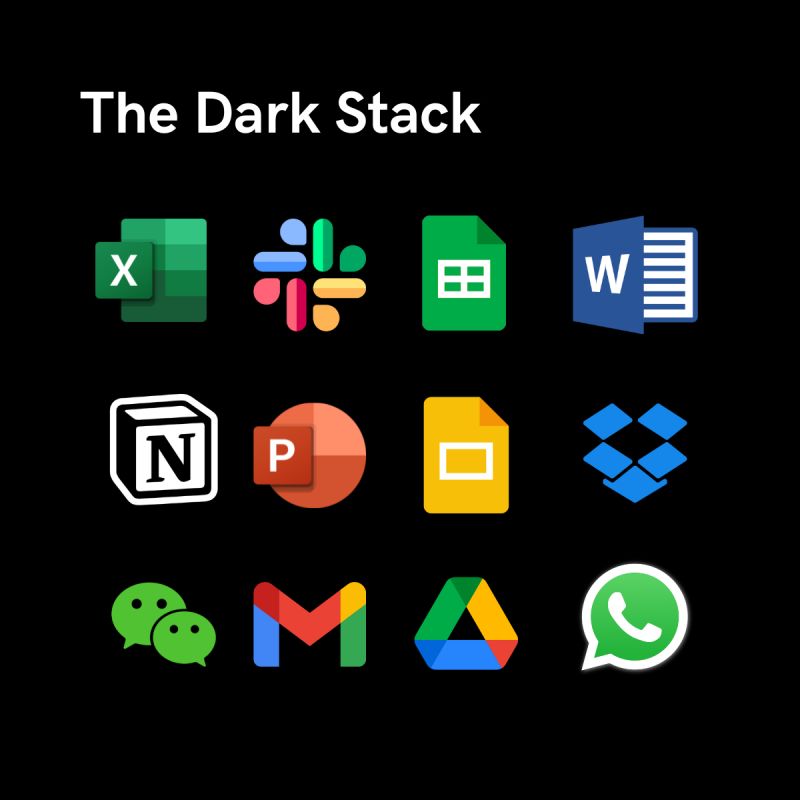The Dark Stack

The Dark Stack is where 90% of the work gets done.
The reality of most businesses is the Dark Stack lives in the shadows because anything goes - and it doesn't look good.
1. Meeting overload.
2. Hiring admin roles to copy & paste data and make reports.
3. The same process or project is being done in multiple places
4. You haven't made a decision between Gmail and Office.
5. Slack is the dumping ground of everything that doesn't have a standard operating procedure.
6. You have Google Sheets to catalogue your Google Sheets.
7. You rely on 'superheroes' who seemingly get the work of 5 people done, but they are also running their own empires that make it hard to scale out their team.
8. Your leadership team are focused on solving the issues of their team rather than thinking about the cross-functional issues that need to be solved. For example, product design teams don't have an issue with tech packs but the buying team are spending days manually extracting data to get it into your ERP. If you ask the design team...you don't have a problem with your tech packs.
What does an Operating System that is designed to include your Tech Stack & Dark Stack mean?
1. Fewer, better, shorter meetings.
2. Less admin aka copy+paste between documents.
3. One single place to find information at a project/process level. e.g. Product launches, new product development, and product enrichment.
4. New starters can onboard faster and find the information they need to do their jobs without decoding a complex web of inconsistent excel files.
5. The business owns and creates the empire - not the people you hire.
6. Centralised information removes siloes and makes it easy to share information. This is the opposite of relying on weekly/daily reports for things like best sellers, goods inbound, and production schedules.
7. The team sees a more complete Enterprise view which means they can think and act like a business owner not vertically from their department's perspective.
8. The success of the business = the success of the individuals.
9. More productive meetings. Everyone is looking at the same information.
10. Better decision-making because the team have more time to evaluate information because they don't need to waste time finding it.
11. Every key asset and component of your business is a home.
